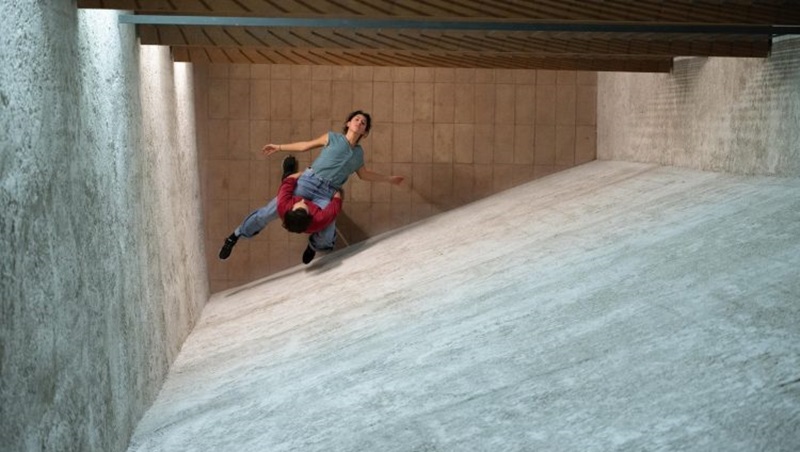The Minister of Public Space Clara Muzzio inaugurated a mural vandalizing trees.
In a red circle are the trees vandalized by Minister Clara Muzzio herself, “Do what i say… but not what I do”.
The city government has just inaugurated a mural in Salguero and Seguí, a work that not only intervenes with walls and benches but also includes painting the trees in that area. Doesn’t it seem contradictory to you that it is the officials themselves who endorse and are happy with such a serious intervention?
In a City where complaints about pruning and illegal extractions are daily and even where there is a precautionary measure since 2017 by Judge Scheibler that forces the communes to explain each intervention in a tree through reports; it is ironic and sad that this happens.
It is curious to think that with the constant claim of neighbors for the lack of green spaces and with the compulsive business policy of Larreta for the sale of public land, the Ministry of Public Space and Urban Hygiene finances and authorizes that even the real trees something that is strictly prohibited.
He cited Article 9 of Law 3263 Article 9 explicitly says that it is prohibited:«Damage them totally or partially by injuring their anatomy or physiology, through mechanical wounds, burning their tissues with fire, fixing foreign elements, introducing or throwing phytotoxic substances on the ground or in their tissues, or painting the stems or branches with lime , varnish or paints. “
When color marketing involves mistreatment of the reservoir of our flora, we must be more aware of how we treat the environment and why we have a Ministry of Public Space and Urban Hygiene.
Maria Paz Carrera Griot
Commune 14 Palermo
To send your comment send an Mail to [email protected]
Who were the ones who generated the vandalization of the public trees of the Palermo neighborhood:
• TREE VANDALIZERS: for Zulma Garcia Cueva (coordinator of the muralism workshop of the UBA) together with 4 students from the same (Patricia Etchegoyen, Maria Laura Luchessi, David Chaves and Wilma Angles).
There are 36 tree species in Buenos Aires and they are included in the City’s Tree Plan
• Trident maple (Acer buergerianum). It reaches 40 cm in diameter and adapts to paths between 2.20 and 3.60 meters.
• Golden ash (Fraxinus excelsior f. Aurea). 40 cm and between 2.20 and 3.60 meters wide sidewalk.
• Crepe (Lagerstroemia indica). 30 cm and between 2 and 3.60 meters of sidewalk.
• Fotinia (Photinia frazeri). 25 cm, and between 1.80 and 2.80 meters.
• Flowering plum (Prunus cerasifera atropurpurea). 25 cm, and between 1.80 and 2.80 meters.
• Viscote (Acacia visco). 50 cm and 2.80 to 4 meters.
• Pata de Buey (Bahuinia candicans). 50 cm and 2.40 to 3.40 meters.
• Anacahuita (Blepharocalyx salicifolius). 50 cm and 2.60 to 3.80 meters.
• American ash (Fraxinus pennsylvanica). 60 cm and 2.40 to 4 meters.
• Disciplined privet (Ligustrum lucidum aureovariegata). 40 cm and 2.40 to 3.60 meters.
• Jacaranda (Jacaranda mimosifolia). 70 cm and 3 to 4.60 meters.
• Liquidambar (Liquidambar styraciflua). 60 cm and 2.80 to 4 meters.
• Tulip tree (Liriodendron tulipifera). 70 cm and 3.20 to 4.40 meters.
• Missionary cedar (Cedrella fissilis). 70 cm and 3.20 to 4.40 meters.
• Golden maple (Acer saccharinum). 70 cm and 3.20 to 4.40 meters.
• Pink lapacho (Handroanthus impetiginosus). 60 cm and 3 to 4.60 meters.
• Banana (Platanus x acerifolia). 70 cm and 4 to 7.40 meters.
• Linden (Tilia moltkei). 70 cm and 3.80 to 7.40 meters.
• Ibir-PITA (Mozambique problem). 80 cm of 7.40 and 4.40 meters.
• Tipa (Tipuana tipu). 90 cm and 5 to 7.40 meters.
• False chestnut (Aesculus hippocastanum). 60 cm and 3.20 to 4.40 meters.
• Disciplined cow hoof (Bauhinia variegata) 40 cm and 2.40 to 3.20 meters.
• Chestnut (Castanea sativa). 60 cm and 3.20 to 4.80 meters.
• Catalpa (Catalpa bignonioides). 60 cm and 2.80 to 3.80 meters.
• Hackberry (Celtis australis). 60 cm and 3 to 4 meters.
• Judas tree (Cercis siliquastrum). 30 cm and 2 to 3 meters.
• Ceibo de Jujuy (Erythrina falcata). 60 cm and 3 to 4 meters.
• Chinese parasol (Firmiana platanifolia). 60 cm and 2.80 to 3.80 meters.
• Golden tree (Ginkgo biloba). 60 cm and 3 to 4.40 meters.
• Sweet stick (Hovenia dulcis). 50 cm and 3 to 4.20 meters.
• Creole walnut (Juglans australis). 60 cm and 3.20 to 4.40 meters.
• American banana (Platanus orientalis). 80 cm and 3.80 to 6.20 meters.
• Lapachillo (Poecilanthe parviflora). 40 cm and 2.40 to 3.60 meters.
• White carob (Prosopis alba). 50 cm and 2.80 to 4 meters.
• Slavonian oak (Quercus robur). 70 cm and 3 to 4.80 meters.
• Yellow lapacho (Tabebuia chrysotricha). 50 cm and 3 and 4.40 meters.
• Palo Borracho, (Ceiba speciosa) 50 cm and 1 meter and 20 meters.




:format(webp)/cloudfront-us-east-1.images.arcpublishing.com/grupoclarin/XM6EP3SM5REKNBOIXJSOCDCOOA.jpg)
